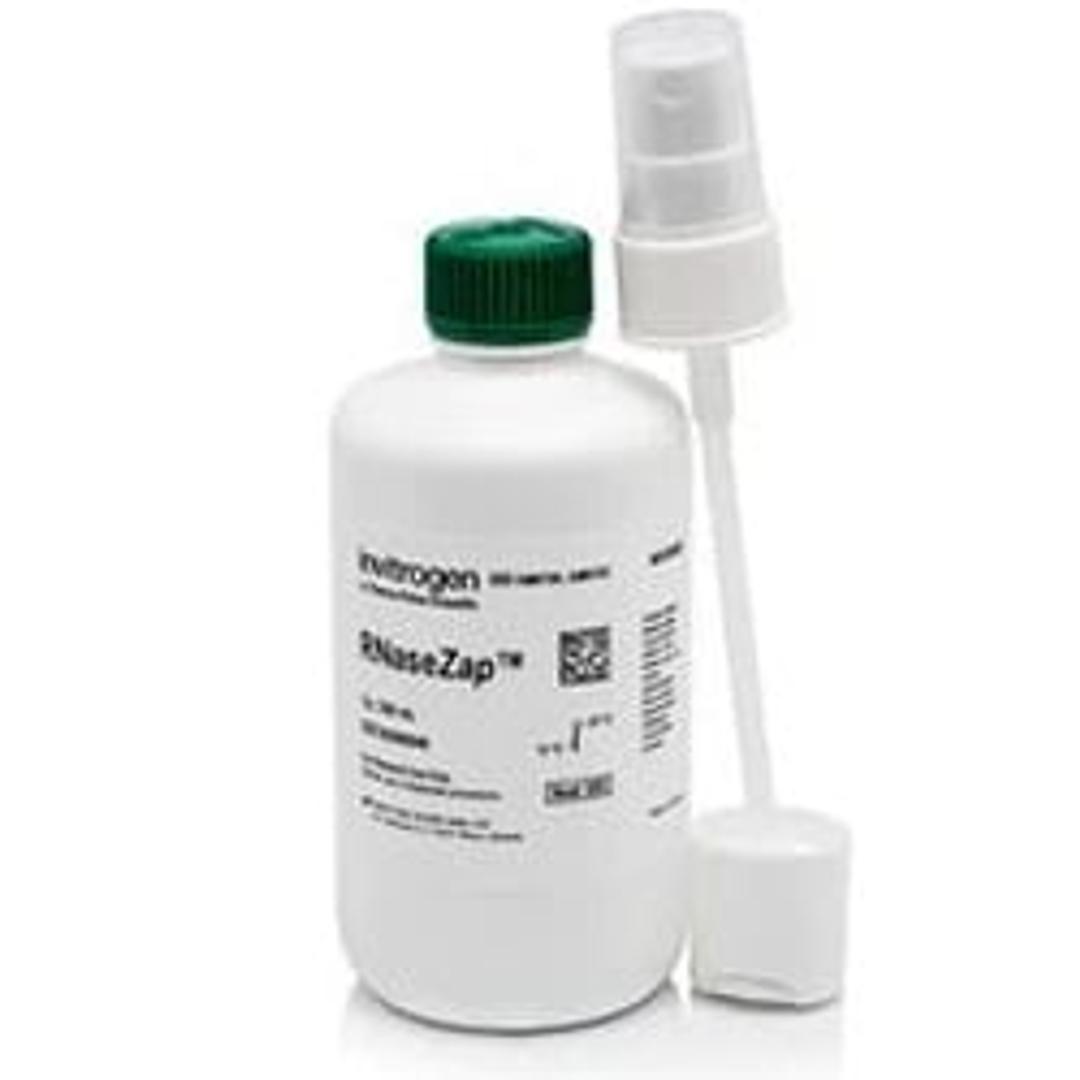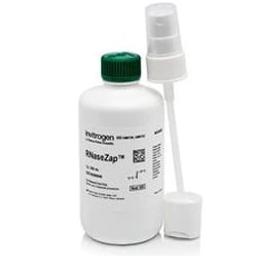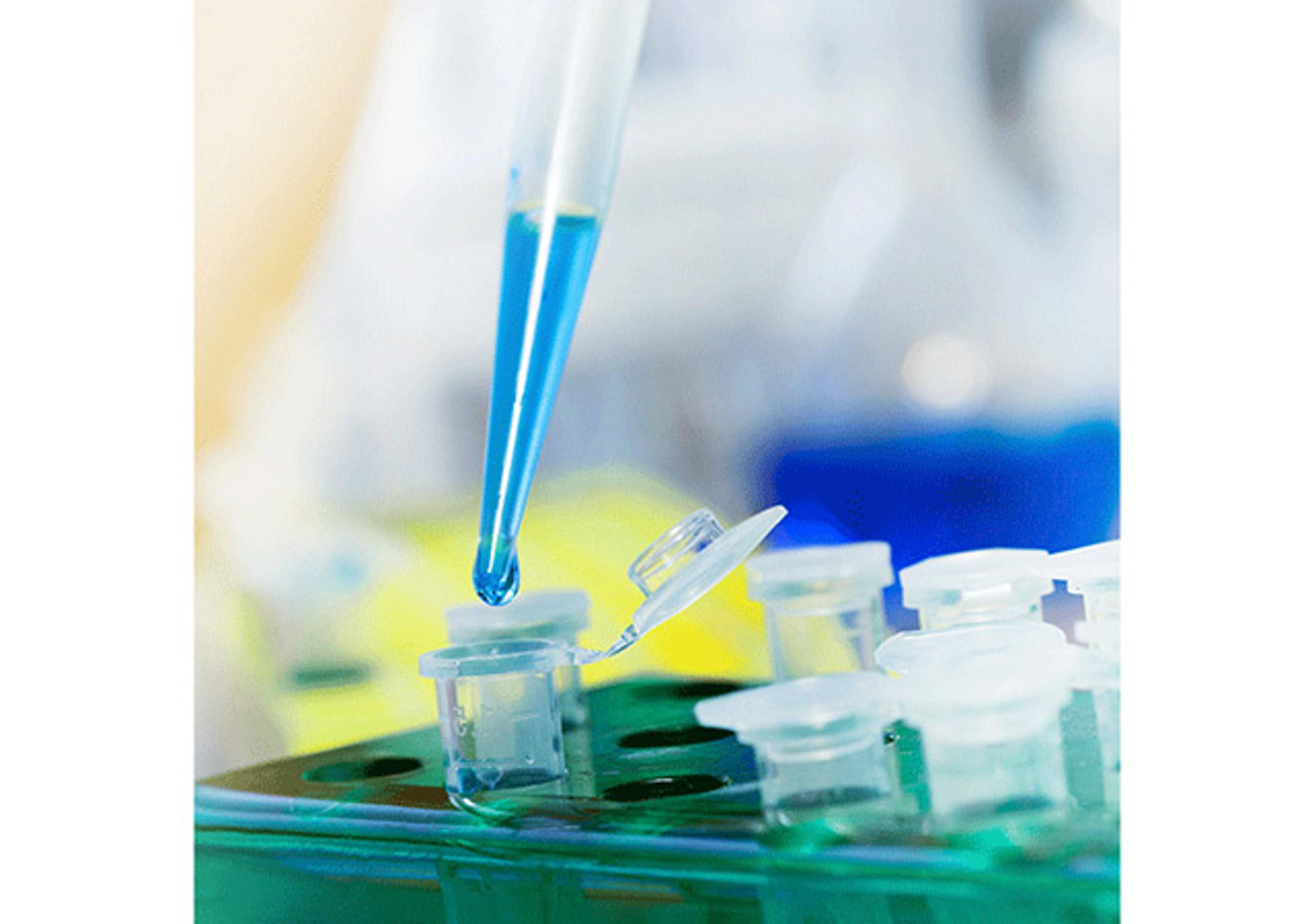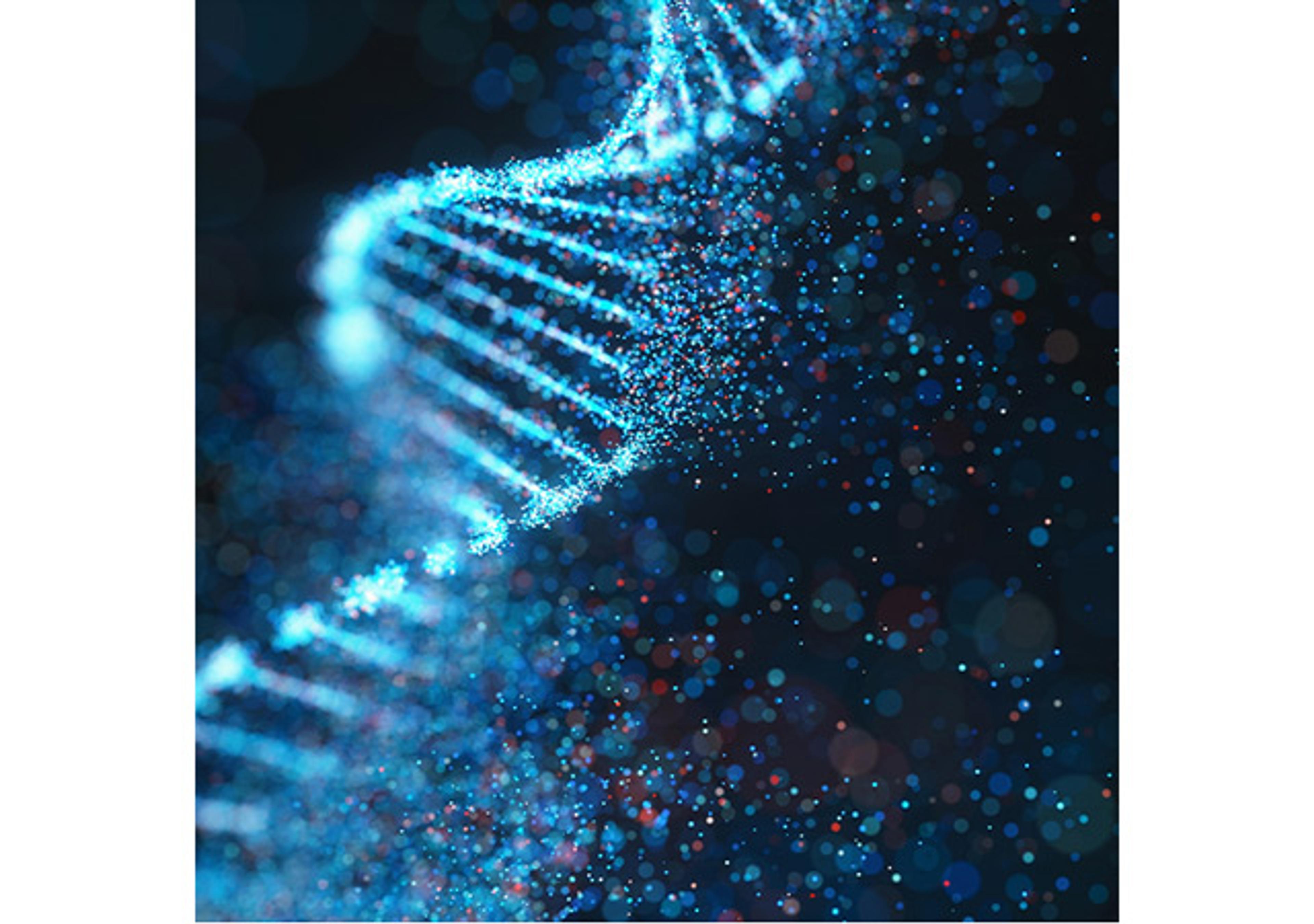RNaseZap™ RNase Decontamination Solution
RNase Zap ® RNase Decontamination Solution is a surface decontamination solution that destroys RNases on contact. You simply spray RNase Zap ® Solution onto the surface to be decontaminated and rinse it off with RNase-free water.

The supplier does not provide quotations for this product through SelectScience. You can search for similar products in our Product Directory.
#1 PCR tool for RNA sample extractions.
Decontamination of BSC and pipettes after extraction for RNA samples
This solution was helpful in cleaning up a contamination problem after extraction for RNA samples. Ready to use pump bottles are convenient. I use along with bleaching and alcohol in my PCR setup.
Review Date: 1 Feb 2021 | Thermo Fisher Scientific
RNaseZap® RNase Decontamination Solution is a surface decontamination solution that destroys RNases on contact. You simply spray RNaseZap® Solution onto the surface to be decontaminated and rinse it off with RNase-free water.
Features of RNaseZap® RNase Decontamination Solution:
- Completely removes RNase contamination from glass and plastic surfaces
- Excels at removing high levels of RNase contamination whereas similar products fail
- Proven effective at removing high concentrations of dried-on RNase A
- Ideal for cleaning work surfaces, pipettors, and equipment that must be RNase-free
Using RNaseZap® Solution
Working with RNA requires that special measures be taken to ensure an RNase-free environment. Even trace quantities of RNase can lead to lower yields from in vitro transcription reactions, degradation during RNA purification protocols, and variable results in RPAs and Northerns. RNaseZap® contains three ingredients active against RNase and has proven to be extremely effective at removing RNase contamination from glassware, plastic surfaces, countertops, and pipettors. It has also been shown to be effective at eliminating RNase contamination from microfuge tubes without inhibiting subsequent enzymatic reactions. Supplied in one 250 mL bottle.
RNase contamination in microfuge tubes
While concern about RNase contamination of frequently handled labware is common and prudent, researchers often do not worry about RNase contamination in commercially prepared products such as microfuge tubes. However, in a survey of six standard 1.5 mL microfuge tubes in which three were pre-rinsed with RNaseZap® and water and three were left untreated, all of the untreated tubes had at least marginal levels of RNase contamination, whereas none of the tubes pre-rinsed with RNaseZap® exhibited contamination. Additionally, in testing commercially available "RNase-free" microfuge tubes, approximately 10% had some RNase contamination (data not shown). This may well account for the erratic results that researchers periodically experience when performing RNA-based assays.


















